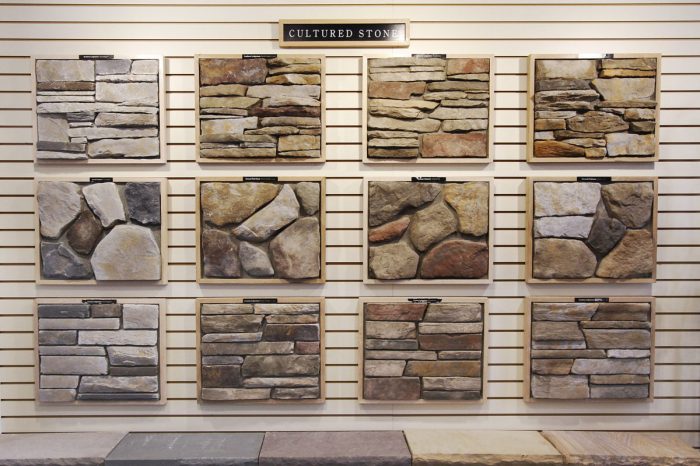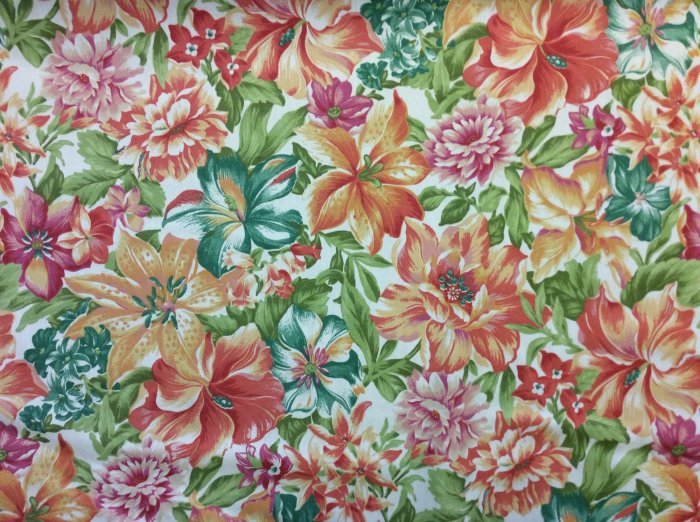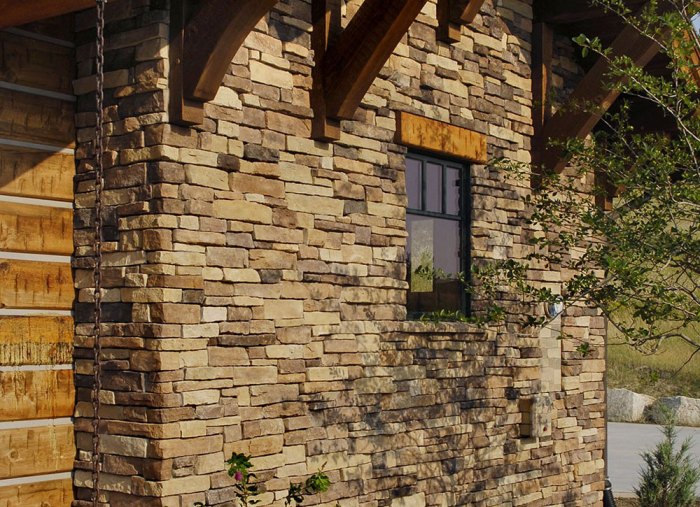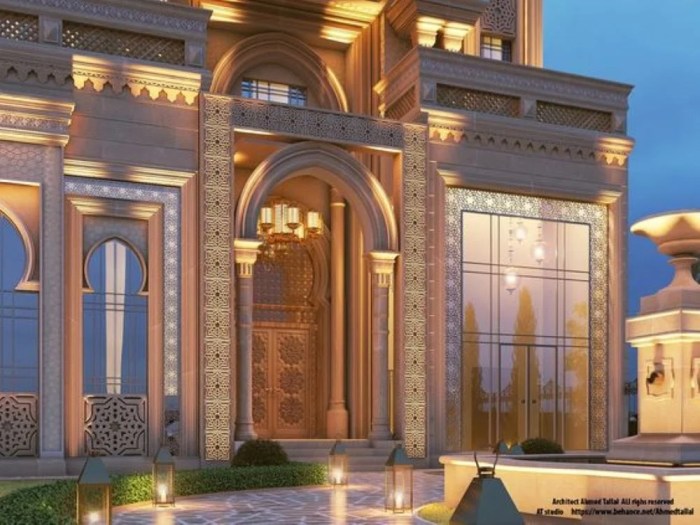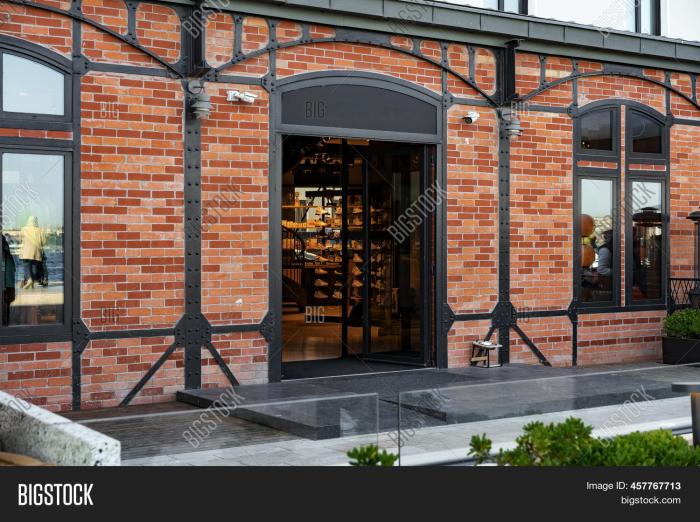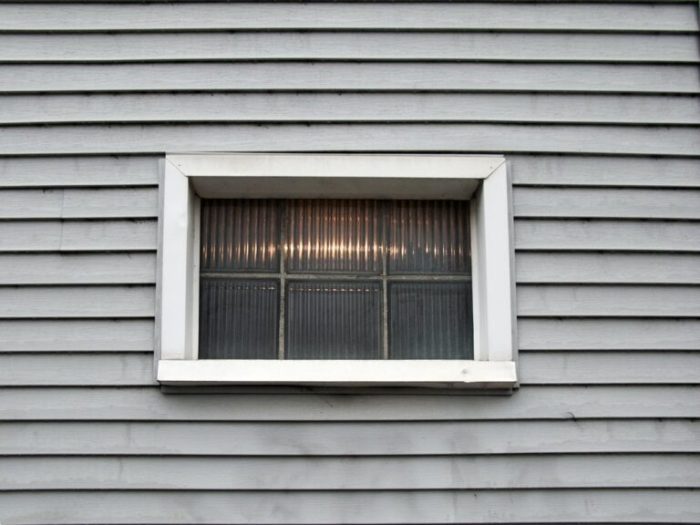Facade Textile A Modern Architectural Canvas
Facade textile, a versatile and innovative building material, offers a captivating approach to modern architecture. This material allows for a striking visual impact, providing a unique aesthetic and significant design opportunities for architects.
From the historical roots of textiles in architecture to the latest advancements in materials and technologies, this exploration dives deep into the world of facade textiles. The discussion covers defining characteristics, material choices, design considerations, and performance metrics, ultimately revealing the full potential of this captivating building solution.
Materials and Construction: Facade Textile
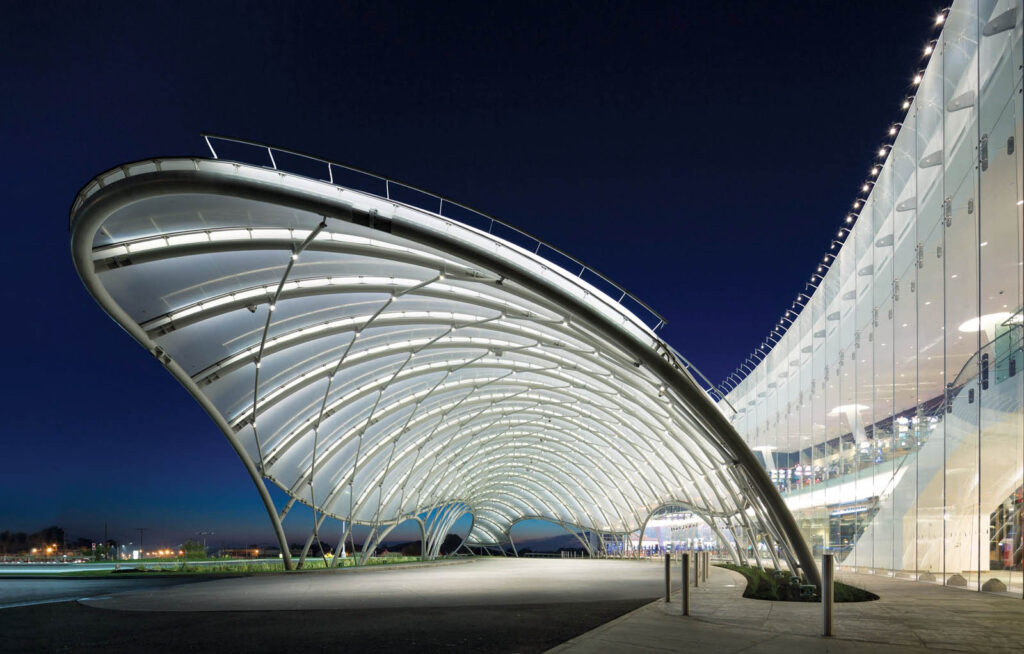
Facade textiles offer a dynamic and versatile approach to building exteriors, blending aesthetic appeal with functional performance. Their diverse material options and adaptable construction methods allow for customized solutions tailored to specific project requirements. This section explores the range of materials used, the manufacturing processes, installation methods, and key factors in selecting the optimal facade textile for a given project.
Facade textile systems employ a range of materials, offering architects and designers substantial creative latitude. From natural fibers with unique textures to advanced synthetic materials with enhanced performance characteristics, the choice of material directly impacts the final aesthetic and functional attributes of the facade.
Material Diversity
Facade textiles utilize a broad spectrum of materials, including both natural and synthetic fibers. Natural fibers, such as jute, hemp, and wool, contribute to the aesthetic appeal and often offer superior breathability and thermal regulation. Synthetic fibers, such as polyester, acrylic, and glass fiber, provide enhanced durability and resistance to environmental factors like UV radiation and moisture. These materials, through careful selection and processing, enable the creation of visually striking and highly functional facades.
Manufacturing Processes
Facade textile manufacturing processes vary depending on the specific material and desired properties. Common methods include weaving, knitting, and non-woven techniques. Weaving produces textiles with a structured, often patterned appearance. Knitting allows for more flexible and drapeable designs. Non-woven techniques, often involving bonding or laminating processes, are used to create lightweight and resilient textile systems. Each method influences the final characteristics of the facade textile, affecting its durability, water resistance, and aesthetic qualities.
Installation Methods
Facade textile installation methods are diverse and adaptable to various building structures and configurations. Common installation methods include direct attachment to the building’s structural framework, using a supporting grid system, or integrating the textile with a curtain wall system. The choice of installation method hinges on factors such as the building’s design, the textile’s characteristics, and the desired level of insulation or weather protection.
Material Selection Factors
Several crucial factors influence the selection of facade textile materials. These include aesthetic considerations, functional requirements, budget constraints, and environmental sustainability. The desired aesthetic, durability, and performance characteristics are paramount in the decision-making process. The anticipated environmental conditions, including exposure to sunlight, wind, and moisture, are also significant factors. Cost-effectiveness and the long-term maintenance requirements of the textile material are equally important considerations.
Material Comparison
| Material | Pros | Cons |
|---|---|---|
| Jute | Naturally sustainable, breathable, and relatively affordable | Susceptible to moisture damage, less durable than some synthetics |
| Polyester | Highly durable, resistant to UV degradation, easy to clean | Can be less breathable, potentially less sustainable |
| Glass Fiber | Excellent fire resistance, high tensile strength, good durability | Can be more expensive than other materials, with potential for sharp edges |
| Hemp | Biodegradable, sustainable, and excellent insulation properties | Can be more expensive than polyester, potentially more susceptible to moisture |
Aesthetics and Design
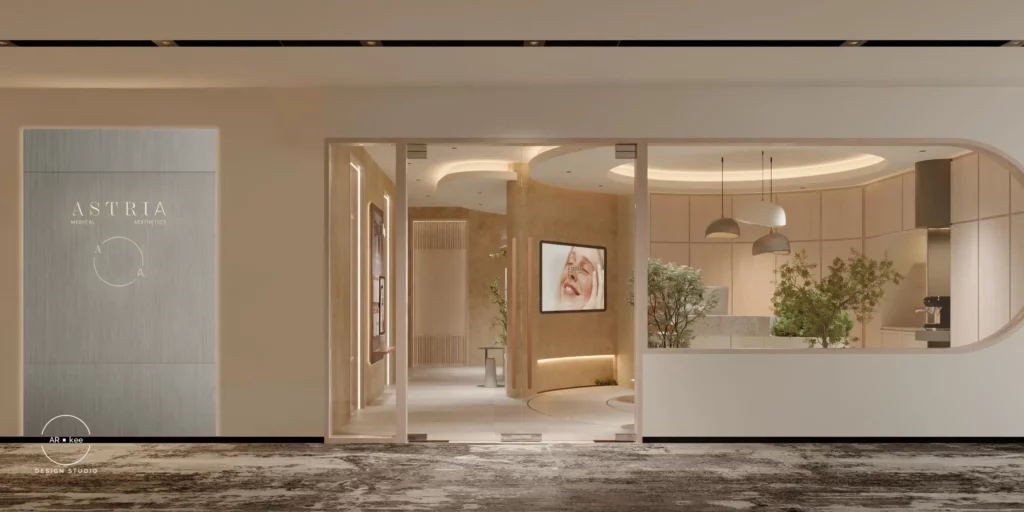
Facade textiles offer a powerful means of enhancing a building’s visual appeal. They provide architects and designers with a versatile tool to create unique, expressive, and aesthetically pleasing exterior surfaces. Beyond basic functionality, these textiles can be integrated into the design process to create a significant impact on the building’s overall aesthetic.
Facade Textile Aesthetic Contributions
Facade textiles significantly contribute to a building’s aesthetic by introducing visual dynamism and texture. Their varied colors, patterns, and materials can transform a structure’s visual identity, making it more captivating and memorable. The ability to integrate complex patterns and colors into the facade can significantly impact the overall aesthetic perception of the building, creating a sense of sophistication and modernity. Their versatility allows for a range of stylistic interpretations, from minimalist to elaborate designs.
Design Approaches for Facade Textiles
Different design approaches exist for incorporating facade textiles into architectural projects. A key approach is integrating the textile’s color and pattern with the building’s architectural style. For example, a contemporary building might benefit from a bold, geometric textile pattern, while a historical structure might be enhanced by a more subtle, traditional textile design. Another approach focuses on creating a layered effect, using multiple textile materials and textures to produce depth and complexity in the facade. Furthermore, the choice of textile material plays a significant role; natural fibers like linen or cotton can evoke a sense of warmth and natural beauty, while synthetic fibers might be chosen for their durability and resistance to weather conditions.
Innovative Facade Textile Designs
Innovative facade textile designs often explore new possibilities for material combinations and patterns. One example might be a facade designed with a dynamic textile pattern that changes color or texture based on the time of day or weather conditions. Another innovation is the use of responsive textiles that adjust to environmental factors, such as temperature or wind, to optimize energy efficiency and visual appeal. These designs explore the potential of textiles to go beyond simple aesthetic enhancements, becoming integral components of the building’s functionality.
Unique Visual Effects with Facade Textiles
Facade textiles can generate unique visual effects, such as creating a sense of movement or depth. For example, a textile with a rippling pattern can evoke a sense of dynamism and fluidity, while a textured textile can create a tactile experience for passersby. The use of translucent or reflective textiles can further enhance the building’s visual interaction with the environment. Sophisticated designs can use projections onto the facade, further enhancing visual impact. The strategic placement and interaction with light can also transform the building’s appearance throughout the day.
Facade Textile Patterns and Textures
| Pattern | Texture | Visual Effect |
|---|---|---|
| Geometric | Smooth | Modern, structured |
| Floral | Woven | Natural, delicate |
| Abstract | Textured | Dynamic, complex |
| Striped | Solid | Simple, elegant |
| Paisley | Embroidered | Intricate, decorative |
The table above provides a basic overview of some common patterns and textures. Many variations and combinations are possible, allowing architects and designers to explore a wide range of visual possibilities. The chosen pattern and texture should complement the building’s overall design and contribute to its unique aesthetic identity.
Functionality and Performance
Facade textiles offer a compelling alternative to traditional building materials, providing a range of functional benefits. Their inherent flexibility and adaptability allow for tailored solutions that optimize building performance and aesthetic appeal. This section delves into the key functional advantages and performance characteristics of facade textiles, highlighting their role in energy efficiency and sunlight management.
Key Functional Benefits
Facade textiles, with their inherent versatility, offer numerous advantages over traditional facade systems. These advantages include enhanced thermal comfort, improved acoustic insulation, and the potential for dynamic shading control. The lightweight nature of these materials allows for easier installation and reduced structural load requirements, often leading to cost savings and faster construction times.
Performance Characteristics
The performance characteristics of facade textiles vary considerably depending on the specific material and construction. Factors such as durability, weather resistance, and thermal performance are crucial considerations. Durability is measured by the textile’s ability to withstand environmental stresses, including UV radiation, wind, and rain. Weather resistance is a key performance indicator, as the textile must effectively withstand the elements without degradation. Thermal performance assesses how well the textile regulates temperature within the building, either by reflecting solar heat or providing insulation.
Energy Efficiency Improvements
Facade textiles can significantly contribute to building energy efficiency. Their ability to modulate solar heat gain can reduce cooling loads in warmer climates, and their insulating properties can mitigate heat loss in colder regions. Strategically designed shading systems can reduce the amount of direct solar radiation entering the building, further optimizing energy use. For example, buildings in sunny climates can experience substantial reductions in energy consumption by employing textiles that effectively reflect sunlight.
Sunlight and Shade Management
Facade textiles can be deployed as dynamic shading systems, adapting to changing sunlight conditions. This adaptability is achieved through various design features, such as adjustable louvers or motorized systems that can alter the textile’s position. Such dynamic control allows for optimal sunlight regulation, enhancing interior comfort and minimizing glare. Examples of this include modern office buildings with textile facades that automatically adjust to the sun’s position throughout the day.
Performance Metrics of Various Facade Textile Types
| Facade Textile Type | Durability (Years) | Weather Resistance (Rating) | Thermal Performance (U-Value) | Cost (USD/m²) |
|---|---|---|---|---|
| Polyester Woven Fabric | 15-20 | Excellent | 2.5-3.5 | 50-75 |
| Acrylic Coated Fabric | 10-15 | Good | 2.0-2.8 | 40-60 |
| Polypropylene Non-Woven Fabric | 8-12 | Moderate | 3.0-4.0 | 30-45 |
| Glass Fiber Reinforced Fabric | 20-25 | Excellent | 1.5-2.0 | 80-120 |
Note: Values in the table are approximate and can vary based on specific fabric properties, construction methods, and environmental conditions. U-Value is a measure of thermal transmittance. Lower U-values indicate better thermal insulation.
Sustainability and Environmental Impact

Facade textiles, while offering aesthetic appeal and functional benefits, have a significant environmental footprint. Understanding the lifecycle impacts of these materials is crucial for responsible design and construction. This section delves into the environmental impact of different facade textile materials, sustainable production practices, and examples of environmentally conscious solutions.
The environmental impact of facade textiles encompasses the entire lifecycle, from raw material extraction to manufacturing, installation, use, and eventual disposal. Minimizing this impact requires a holistic approach, considering material choices, manufacturing processes, and the building’s operational energy consumption. This analysis ensures that the aesthetic and practical advantages of facade textiles are realized without undue environmental harm.
Environmental Impact of Different Materials
Various facade textile materials exhibit varying degrees of environmental impact. Natural fibers, such as linen or hemp, often have a lower carbon footprint compared to synthetic materials like polyester. However, the production processes and water usage associated with natural fibers can still contribute to environmental burdens. The choice of material, therefore, must be evaluated holistically, considering the entire lifecycle.
Sustainable Practices in Production
Several sustainable practices can reduce the environmental impact of facade textile production. These include using recycled materials, optimizing manufacturing processes to reduce energy consumption, and employing water-efficient techniques. Furthermore, supporting suppliers who adhere to ethical labor standards and environmental regulations is crucial. By incorporating these practices, designers can contribute to minimizing the overall environmental footprint.
Sustainable Facade Textile Solutions
Examples of sustainable facade textile solutions include using recycled or bio-based materials, such as recycled PET or plant-derived fibers. These materials can significantly reduce the reliance on virgin resources and minimize the environmental burden associated with their production. Additionally, using locally sourced materials can reduce transportation emissions. Companies that prioritize these sustainable solutions can significantly minimize their impact on the environment.
Comparison of Sustainability Profiles
Comparing the sustainability profiles of different facade textile materials requires considering various factors, including embodied energy, water usage, greenhouse gas emissions, and the potential for recyclability. A life cycle assessment (LCA) is a valuable tool for evaluating the environmental impact of a product or system throughout its entire lifecycle. This evaluation helps in identifying the most sustainable options and making informed material choices.
Sustainable Facade Textile Options
| Material | Environmental Advantages |
|---|---|
| Recycled Polyester | Reduces reliance on virgin resources, lowering the carbon footprint. Often easier to recycle than virgin polyester. |
| Hemp | High strength and durability with a relatively low carbon footprint compared to many synthetics. Hemp requires less water for cultivation than cotton. |
| Linen | Biodegradable and renewable, with a relatively low carbon footprint. The cultivation process can be water-intensive, but overall impacts can be lower than synthetic alternatives. |
| Recycled PET | Reduces plastic waste and minimizes reliance on petroleum-based materials. Recycled PET offers a strong alternative to virgin materials. |
| Recycled Nylon | Minimizes environmental impact associated with virgin nylon production, reducing reliance on fossil fuels. |
Case Studies and Applications
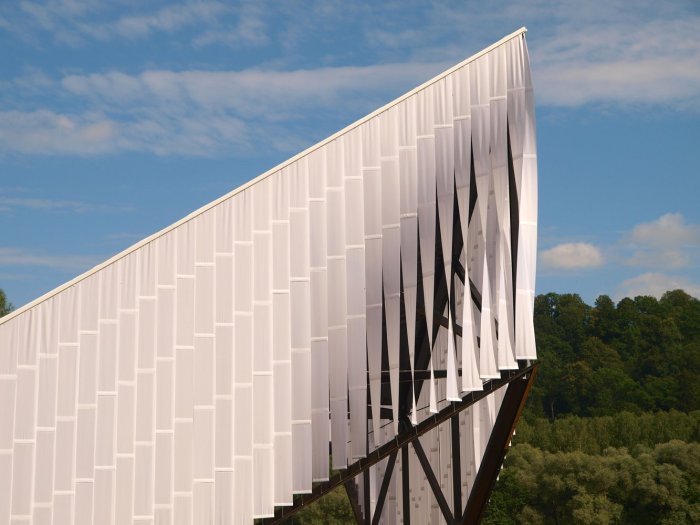
Source: dwell.com
Facade textiles offer a compelling alternative to traditional building materials, showcasing versatility and design potential across various architectural styles. Their adaptability allows for unique aesthetic expressions and functional benefits, making them a desirable choice for diverse projects.
Examples of Facade Textile Applications
Facade textiles are increasingly used in a wide range of architectural contexts. Residential projects often utilize them for creating visually appealing and private exterior spaces, while commercial buildings can employ them to enhance branding and aesthetic appeal. Public spaces, such as parks and cultural centers, can incorporate them to add a touch of artistry and environmental responsibility.
Role of Facade Textiles in Creating Unique Architectural Statements
Facade textiles contribute significantly to a building’s unique architectural identity. Their diverse textures, colors, and patterns can be tailored to match the specific design aesthetic of a project, fostering a distinctive visual presence. The interplay of light and shadow on these textiles can further enhance the building’s character and visual interest, particularly at different times of the day. This dynamic interplay is often leveraged to create a strong architectural statement.
Factors Considered When Choosing Facade Textiles for Specific Projects
Several key factors influence the selection of facade textiles for a given project. These include the building’s architectural style, the desired aesthetic impact, the budget, and the intended functionality of the textile. The specific climate conditions of the location also play a crucial role in determining the suitability and performance characteristics of the material. Furthermore, the textile’s durability, maintenance requirements, and fire safety ratings are critical considerations.
Challenges and Solutions Associated with Using Facade Textiles in Different Climates
Facade textiles, while adaptable, present challenges in various climates. In high-wind regions, careful anchoring and structural design are necessary to prevent damage. Extreme temperatures can also affect the textile’s performance and longevity. Solutions include the use of specialized fabrics designed for specific climates, robust anchoring systems, and regular maintenance schedules.
Case Study Table
| Project Name | Architectural Context | Specific Features | Climate Considerations |
|---|---|---|---|
| The Woven Pavilion | Public park | Utilizes a sun-filtering, light-diffusing textile to create a shaded and airy space, incorporating intricate woven patterns that highlight the surrounding landscape. | Designed with high UV resistance and durability to withstand the intense sunlight and potential high winds in the region. |
| Contemporary Commercial Center | Commercial building | Employing a dynamic, patterned textile facade that complements the modern architecture and provides a visually engaging exterior. The textile’s design reflects the company’s brand identity. | Fabric chosen for weather resistance and long-term performance in a region with variable weather patterns. |
| Sustainable Residential Complex | Residential development | Utilizes a breathable, sustainable textile facade that reduces the building’s energy consumption by managing heat and light. The fabric also contributes to the building’s aesthetic appeal. | Fabric selected for its ability to withstand the region’s average temperatures and precipitation levels. |
Future Trends and Innovations
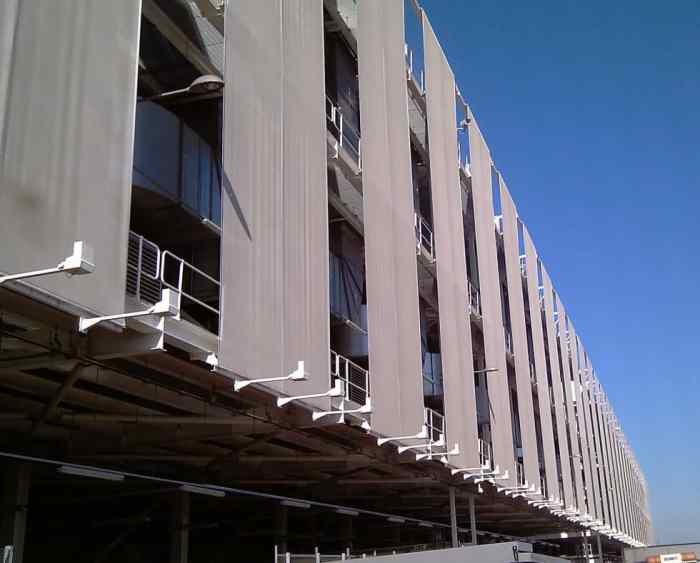
Source: architen.com
Facade textiles are poised for significant evolution, driven by advancements in materials science, design aesthetics, and sustainability considerations. Emerging trends are reshaping the role of these textiles in architectural design, promising increased functionality and performance while minimizing environmental impact. This evolution promises to redefine the relationship between buildings and their surroundings.
Emerging Trends in Design and Technology
Facade textiles are increasingly incorporating innovative design elements, moving beyond simple aesthetic applications. This involves exploring intricate patterns, dynamic lighting integration, and interactive surfaces. The incorporation of advanced materials is leading to lighter, more flexible, and adaptable textile systems. These advancements enhance design freedom and open new possibilities for architectural expression.
Potential Applications of New Materials and Technologies
New materials and technologies offer exciting prospects for facade textiles. Carbon fiber composites are enhancing structural integrity and reducing weight, making large-scale installations more feasible. Advanced polymers with improved UV resistance and self-cleaning properties are extending the lifespan of textile facades. Furthermore, integration with smart technologies allows for dynamic control of light, temperature, and ventilation, offering optimized building performance.
Innovative Approaches to Using Facade Textiles
Innovative approaches are expanding the scope of facade textiles beyond traditional applications. The use of textile structures as integrated solar shading systems is becoming more common. Moreover, integrating vertical gardens and agricultural systems into facade textile designs is gaining traction, fostering sustainable building practices. Furthermore, the development of interactive textile facades responding to environmental factors like wind or sunlight presents an intriguing avenue for future designs.
Future of Facade Textiles in Sustainable Development
Facade textiles are increasingly recognized for their potential in sustainable development. The use of recycled and bio-based materials is becoming more prevalent, aligning with circular economy principles. Moreover, their adaptability for energy efficiency through optimized solar shading and natural ventilation strategies contributes significantly to reducing a building’s environmental footprint. This includes the potential for integrating renewable energy sources into the textile structure itself.
Potential Future Advancements in Facade Textile Technology
| Advancement | Description | Impact |
|---|---|---|
| Bio-based materials | Utilizing plant-derived fibers and polymers in facade textiles. | Reduced environmental impact, enhanced sustainability, and potential for biodegradability. |
| Self-healing textiles | Development of textiles capable of repairing minor damage. | Extended lifespan and reduced maintenance costs. |
| Integration with smart technologies | Incorporating sensors and actuators into textile facades for dynamic control of environmental factors. | Improved energy efficiency, enhanced comfort, and responsive building design. |
| Dynamic shading systems | Textiles capable of adjusting their position or transparency to optimize solar gain and energy efficiency. | Significant reduction in energy consumption, enhanced thermal comfort, and improved daylighting. |
| Advanced structural designs | Exploring novel textile structures that provide high strength-to-weight ratios and intricate geometries. | Increased design freedom, support for larger spans, and optimized aesthetics. |
Wrap-Up
In conclusion, facade textiles have evolved from a niche element to a prominent feature in contemporary architecture. The versatility of these materials allows for a wide range of design options, enhancing both aesthetics and functionality. As sustainability concerns continue to grow, facade textiles are poised to play an increasingly important role in shaping the future of building design, offering both aesthetic appeal and environmental consciousness.
